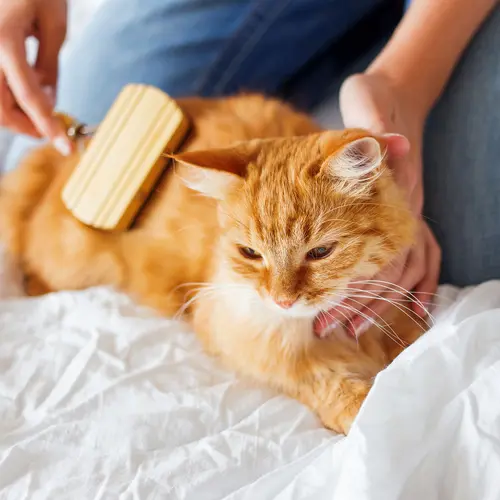There’s a lot of information on the label of your cat’s food. The trick is knowing what’s important for your cat’s health and what’s just advertising.
The most important thing on the label is the nutrition claim. It should say that the food is “complete and balanced.” If it doesn’t, there’s no guarantee that the food will meet your cat’s needs.
A cat food label should also have the following:
- How much food is in the container
- Who makes or distributes the food
- The ingredients
- What stage of life the food is for (kitten, adult, pregnant or nursing cat, all life stages)
- The nutrients in the food (protein, fat, fiber)
- How many calories it has
- How much to feed your cat
AAFCO Statement
The Association of American Feed Control Officials (AAFCO) is a group of government agencies that help regulate animal food. Look for its statement on the packaging.
The best AAFCO statement will have the words “feeding tests” or “feeding trials” in it. This means that cats ate the food as part of a scientific study, and the results showed it met the cats’ needs.
The next-best statement will say the food “is formulated to meet nutritional levels.” This means the recipe has the vitamins and other nutrients scientists know your cat needs, though it wasn’t actually tested in cats.
Guarantees
Like the Nutrition Facts panel on packaged foods for people, cat food labels will have a “guaranteed analysis,” which tells you portions of key nutrients in the product. The list is usually on the back or side of the package. Cat food labels are required to list percentages of four nutrients:
- Minimum protein
- Minimum fat
- Maximum fiber
- Maximum moisture
A label might list other guarantees, like magnesium or taurine, too.
Ingredients
The ingredients are listed in order of their weight, from most to least. The first one listed accounts for the most weight in the food.
Cats need protein, although the exact amount depends on if they are kittens, adults, or have a medical condition. The guarantees are the easiest way to find out how much protein the food has. But if you’re curious about ingredients, in general look for brands that have high-protein ingredients toward the beginning of the list, such as:
- Meat (beef, chicken, turkey, etc.)
- Meat byproducts (animal parts like kidneys and liver)
- Seafood (salmon, tuna, etc.)
What Does It Mean?
Some of the words on a cat food label can be helpful, and some are more advertising than anything else.
“All natural.” This generally means the food has no man-made colors, flavors, or preservatives. The catch is that pet foods that have a certain amount of fat need some kind of preservative to keep them from going bad too fast. So just because a food has no artificial preservatives, that doesn’t mean it has no preservatives at all. It’s just that the ones it has are natural.
“Gourmet” or “premium.” These words are essentially meaningless. There are no special rules companies must follow to put them on their labels. They don’t mean the food is any healthier or tastier for your cat than other kinds.
“Grain-free” or “no grain.” Unless your vet has told you your cat cannot eat grain, don’t worry about looking for these terms. They’re more gimmick than anything else.
“Organic.” When human foods have this term on their labels, it refers to how the plants and animals used for the food were grown or raised -- without antibiotics, growth hormones, and other specific chemicals. But the U.S. Department of Agriculture has no official rules on when pet food makers can use this term. Until they make those regulations, there’s no good way to know if your kitty’s food meets those standards.

